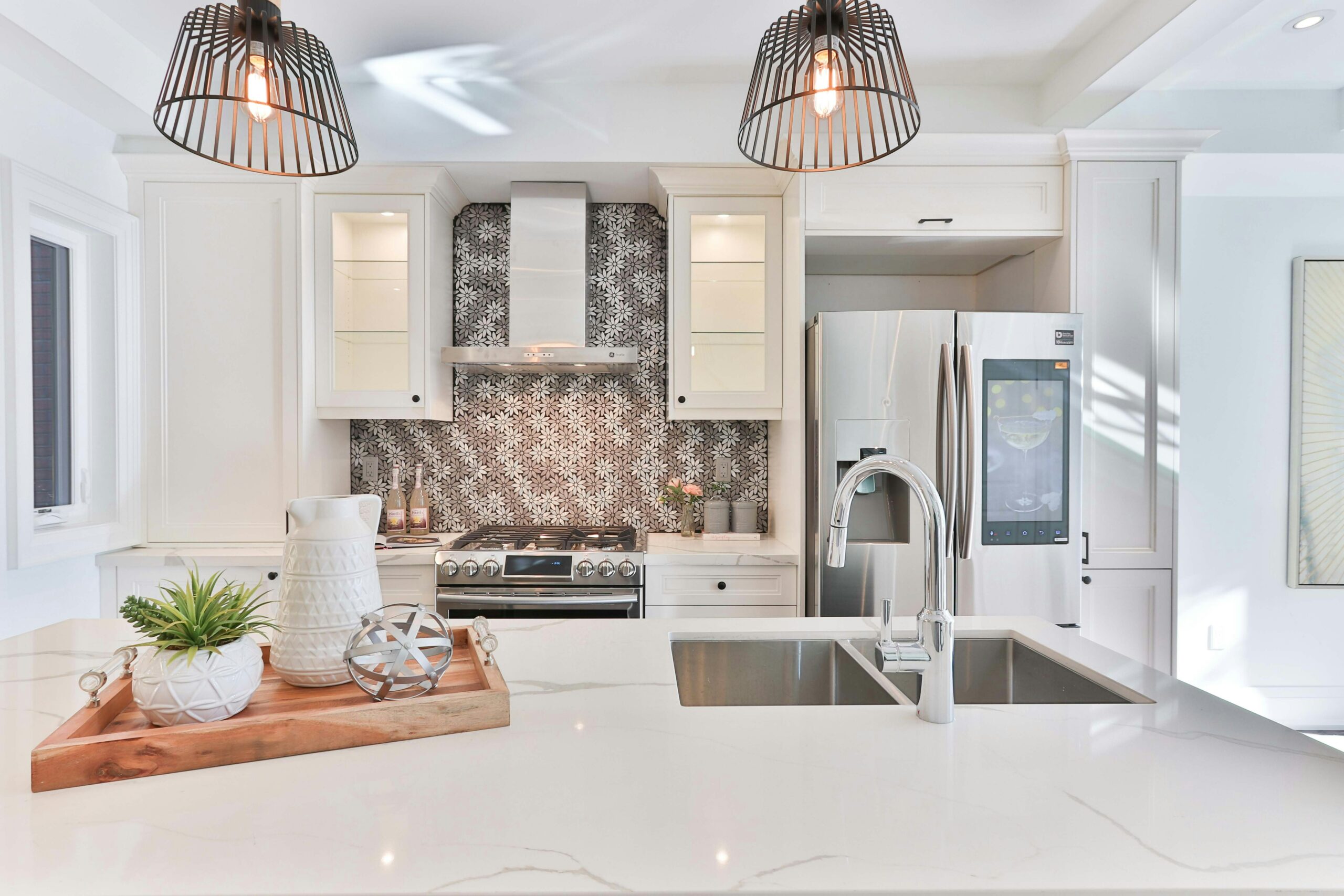When embarking on a home renovation or designing a new space, the task of finding the perfect kitchen cabinet with countertop is paramount. Kitchens are the heart of any home and having a functional and aesthetically pleasing kitchen cabinet and countertop combination makes a huge difference. Not only does it enhance your cooking and dining experience, but it also significantly boosts your property’s value.
In the forthcoming sections, we will dive deeper into how to choose the right cabinet and countertop for your kitchen, the benefits of installing them, and how to maintain them effectively. Additionally, we will provide you with various ways to style your kitchen cabinet with a countertop, unveil some quality indicators to look out for, and factors to consider during the purchasing process.
Furthermore, we will explore the cost factor and conduct a comparative analysis of various materials you can consider. We understand the vital role that a kitchen cabinet with countertop plays in designing a kitchen, so we will enlighten you on this aspect too. And before we wrap up, we will give you a glimpse of future trends in cabinet and countertop designs to keep you ahead of the game.
So, buckle up for an enlightening expedition around everything you need to know about kitchen cabinets with countertops!
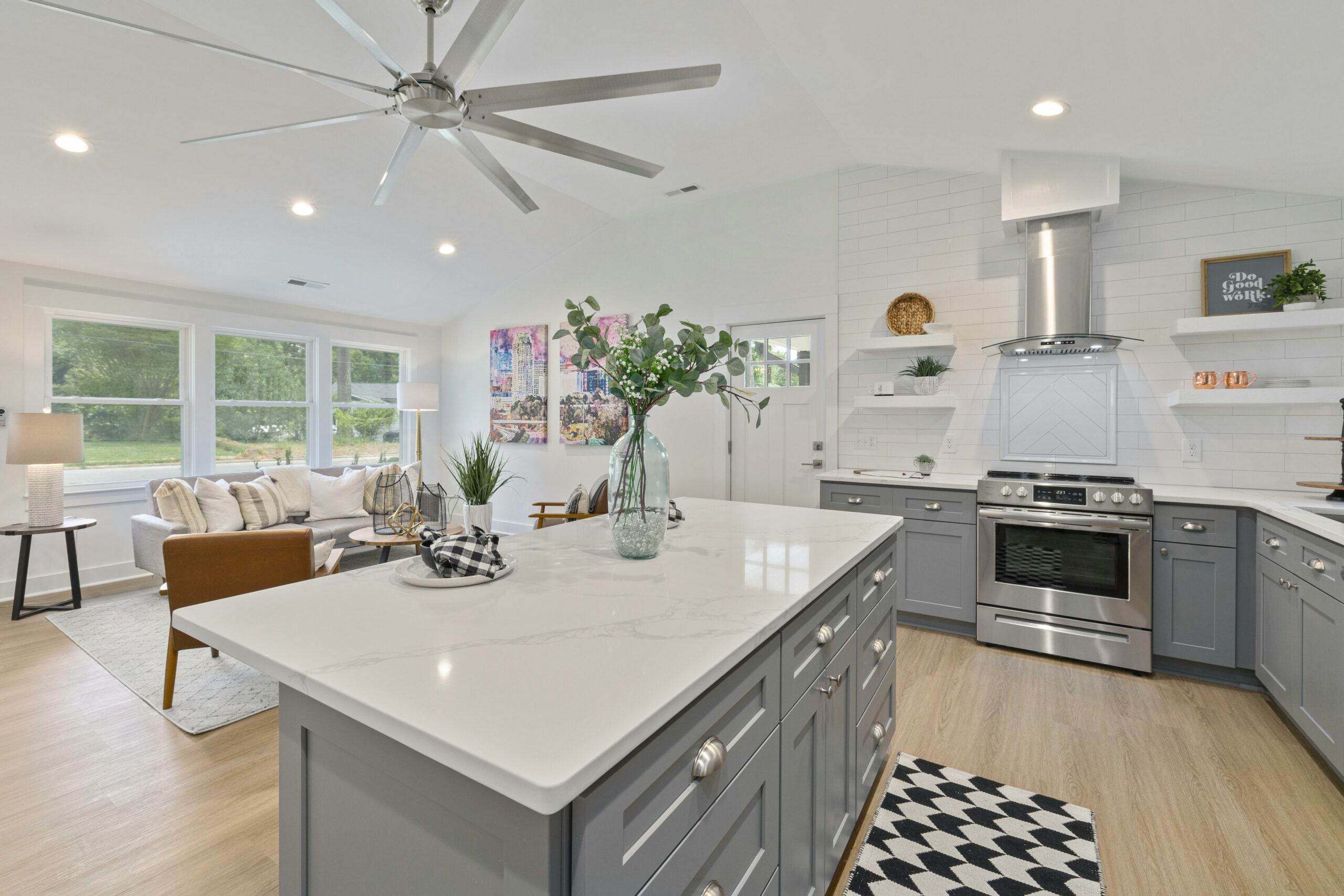
Choosing the Right Kitchen Cabinet
When it comes to designing your kitchen, one of the most important decisions you’ll make is choosing the right kitchen cabinet with countertop. This combination not only provides functional storage space but also sets the tone for the overall aesthetic of your kitchen.
Benefits of Installing a Kitchen Cabinet with Countertop
There are several benefits to installing a kitchen cabinet with countertop:
-
- Efficient use of space: Maximizes storage space and provides a convenient work surface.
-
- Enhanced functionality: With a countertop, you have a dedicated area for food preparation, cooking, and other kitchen tasks.
-
- Aesthetically pleasing: The combination of a kitchen cabinet and countertop adds visual appeal to your kitchen and can complement your overall design theme.
-
- Increased home value: A well-designed kitchen with high-quality cabinets and countertops can significantly increase the value of your home.
How to Maintain
To keep your kitchen cabinet with countertop looking its best, it’s important to follow proper maintenance practices:
-
- Regular cleaning: Wipe down the surfaces with a mild detergent and warm water regularly to remove dirt and stains.
-
- Avoid harsh chemicals: Harsh chemicals can damage the finish of your cabinet and countertop, so it’s best to use gentle cleaning products.
-
- Protect from heat and moisture: Use trivets or hot pads to protect the countertop from hot pans and avoid placing wet items directly on the surface.
-
- Periodic resealing: If your countertop is made of natural stone, it may require periodic resealing to maintain its durability and appearance.
Ways to Style Your Kitchen Cabinet with Countertop
Styling your kitchen cabinet with countertop can enhance the overall look and feel of your kitchen:
-
- Display decorative items: Use open shelves or glass-front cabinets to showcase your favorite dishes, glassware, or decorative items.
-
- Add greenery: Incorporate potted plants or herbs to bring a touch of nature into your kitchen.
-
- Use coordinating accessories: Choose accessories like drawer pulls, knobs, and faucets that complement the style and finish of your cabinet and countertop.
-
- Play with lighting: Install under-cabinet lighting to highlight the beauty of your countertop and create a warm ambiance in your kitchen.
Quality Indicators in a Kitchen Cabinet with Countertop
When selecting a kitchen cabinet with countertop, there are several quality indicators to consider:
-
- Material: Choose cabinets and countertops made from high-quality materials that are durable and resistant to wear and tear.
-
- Craftsmanship: Look for cabinets with solid construction, smooth finishes, and precise joinery.
-
- Hardware: Pay attention to the quality of hinges, drawer slides, and other hardware components for long-lasting functionality.
-
- Finish: A high-quality finish on both the cabinet and countertop ensures resistance to stains, scratches, and other damage.
Factors to Consider when Buying a Kitchen Cabinet with Countertop
Before making a purchase, consider the following factors:
-
- Layout and space: Assess the layout and available space in your kitchen to determine the size and configuration of the cabinet and countertop.
-
- Style and design: Choose a cabinet and countertop that complements your desired kitchen style and design aesthetic.
-
- Budget: Set a budget and consider the cost of both the cabinet and countertop, including installation.
-
- Maintenance: Consider the level of maintenance required for the chosen materials and finishes.
The Cost of Kitchen Cabinet with Countertop Installations
The cost of installing a kitchen cabinet with countertop can vary depending on several factors:
-
- Materials: The cost of the cabinet and countertop materials can vary greatly depending on the chosen materials, such as solid wood, laminate, quartz, or granite.
-
- Size and configuration: Larger cabinets and countertops or more complex configurations may increase the overall cost.
-
- Installation: The cost of professional installation should be factored into the overall budget.
Comparing Materials for Your Kitchen Cabinet with Countertop
There are various materials to choose from when selecting a kitchen cabinet and countertop:
-
- Wood: Solid wood cabinets and countertops offer a timeless and natural look, but require regular maintenance.
-
- Laminate: Laminate cabinets and countertops are affordable, durable, and come in a wide range of colors and patterns.
-
- Quartz: Quartz countertops are engineered stone surfaces that are non-porous, stain-resistant, and require minimal maintenance.
-
- Granite: Granite countertops are known for their durability, heat resistance, and unique natural patterns.
The Role of a Kitchen Cabinet with Countertop in Kitchen Design
A kitchen cabinet with countertop plays a crucial role in the overall design of your kitchen:
-
- Storage: Cabinets provide ample storage space for kitchen essentials, while countertops offer a functional workspace.
-
- Aesthetics: The style, color, and finish of the cabinet and countertop contribute to the overall aesthetic appeal of the kitchen.
-
- Functionality: Cabinets and countertops should be designed to optimize workflow and make daily tasks more efficient.
Future Trends for Kitchen Cabinet and Countertop Designs
As kitchen design trends evolve, there are several future trends to watch for in cabinet and countertop designs:
-
- Minimalist designs: Clean lines, sleek finishes, and minimalist designs are expected to continue growing in popularity.
-
- Mixed materials: Combining different materials, such as wood and metal, can create a unique and visually interesting kitchen.
-
- Smart features: Integration of smart technology into cabinets and countertops, such as touchless faucets and built-in charging stations, is likely to increase.
-
- Eco-friendly options: Sustainable materials and energy-efficient features are expected to become more prevalent in kitchen design.

Benefits of Installing
Installing a kitchen cabinet with countertop offers numerous benefits that can enhance the functionality, aesthetics, and overall value of your kitchen space. Here are some key advantages:
1. Increased Storage Space
A kitchen cabinet with countertop provides ample storage space for all your kitchen essentials. With multiple shelves, drawers, and compartments, you can easily organize and store your cookware, utensils, and pantry items, keeping your kitchen clutter-free.
2. Enhanced Organization
By having a dedicated space for each item, a kitchen cabinet with countertop helps you stay organized. You can categorize your items and label the shelves or drawers accordingly, making it easier to find what you need when cooking or baking.
3. Improved Efficiency
A well-designed kitchen cabinet with countertop allows for easy access to your cooking tools and ingredients. With everything within reach, you can work more efficiently and save time during meal preparation, ultimately making your cooking experience more enjoyable.
4. Enhanced Aesthetics
A kitchen cabinet with countertop adds a touch of elegance and style to your kitchen. With various materials, finishes, and designs available, you can choose a cabinet that complements your kitchen’s overall decor and enhances its visual appeal.
5. Increased Property Value
Investing in a kitchen cabinet with countertop can significantly increase the value of your property. Potential buyers consider a well-designed and functional kitchen as a major selling point, making it a worthwhile investment that can yield a higher return in the future.
6. Easy Maintenance
Many kitchen cabinets with countertops are designed to be low maintenance. The materials used are durable and resistant to stains, scratches, and heat, making them easy to clean and maintain. Regular wiping and occasional resealing are usually all that’s needed to keep them looking as good as new.
Overall, installing a kitchen cabinet with countertop offers a range of benefits that can greatly improve your kitchen’s functionality, organization, aesthetics, and value. It’s a worthwhile investment that can enhance your cooking experience and elevate the overall look of your kitchen space.
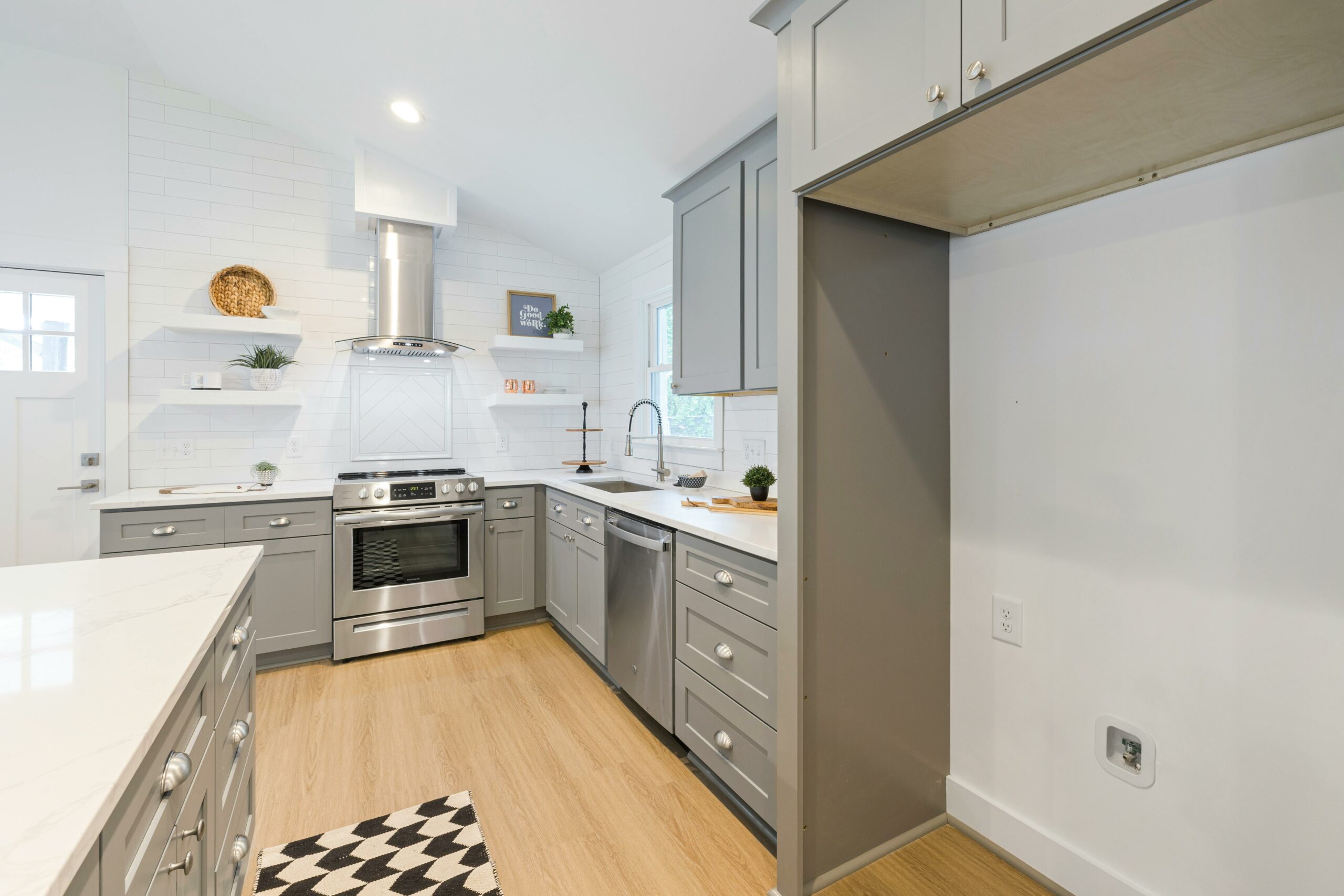
How to Maintain Your New Kitchen Cabinet
Maintaining your new kitchen cabinet is essential to ensure its longevity and keep it looking its best. Here are some tips to help you maintain your kitchen cabinet with countertop:
1. Regular Cleaning
Regularly clean your kitchen cabinet with countertop to remove dirt, dust, and food particles. Use a mild soap or detergent and warm water to wipe down the surfaces. Avoid using abrasive cleaners or scrub brushes that can scratch the countertop.
2. Avoid Harsh Chemicals
Avoid using harsh chemicals on your kitchen cabinet with countertop as they can damage the finish and cause discoloration. Instead, opt for gentle cleaners that are specifically formulated for use on countertops.
3. Use Cutting Boards and Trivets
Protect your countertop from scratches and heat damage by using cutting boards and trivets. Avoid placing hot pots and pans directly on the countertop, as this can cause burns or discoloration.
4. Wipe up Spills Immediately
Accidents happen, but it’s important to wipe up spills immediately to prevent staining or damage to the countertop. Use a clean cloth or paper towel to blot the spill and avoid rubbing, as this can spread the stain.
5. Avoid Excessive Weight
Avoid placing heavy objects on your kitchen cabinet with countertop, as this can cause it to warp or crack. Be mindful of the weight of appliances, cookware, and other items that you place on the countertop.
6. Seal the Countertop
If your countertop is made of a porous material, such as granite or marble, it’s important to seal it regularly to prevent stains and damage. Follow the manufacturer’s instructions for sealing the countertop and reapply as needed.
7. Handle with Care
When opening and closing cabinet doors and drawers, handle them with care to avoid causing damage to the cabinet and countertop. Avoid slamming doors or drawers shut, as this can cause the countertop to chip or crack.
By following these maintenance tips, you can keep your new kitchen cabinet with countertop looking beautiful and ensure its durability for years to come.
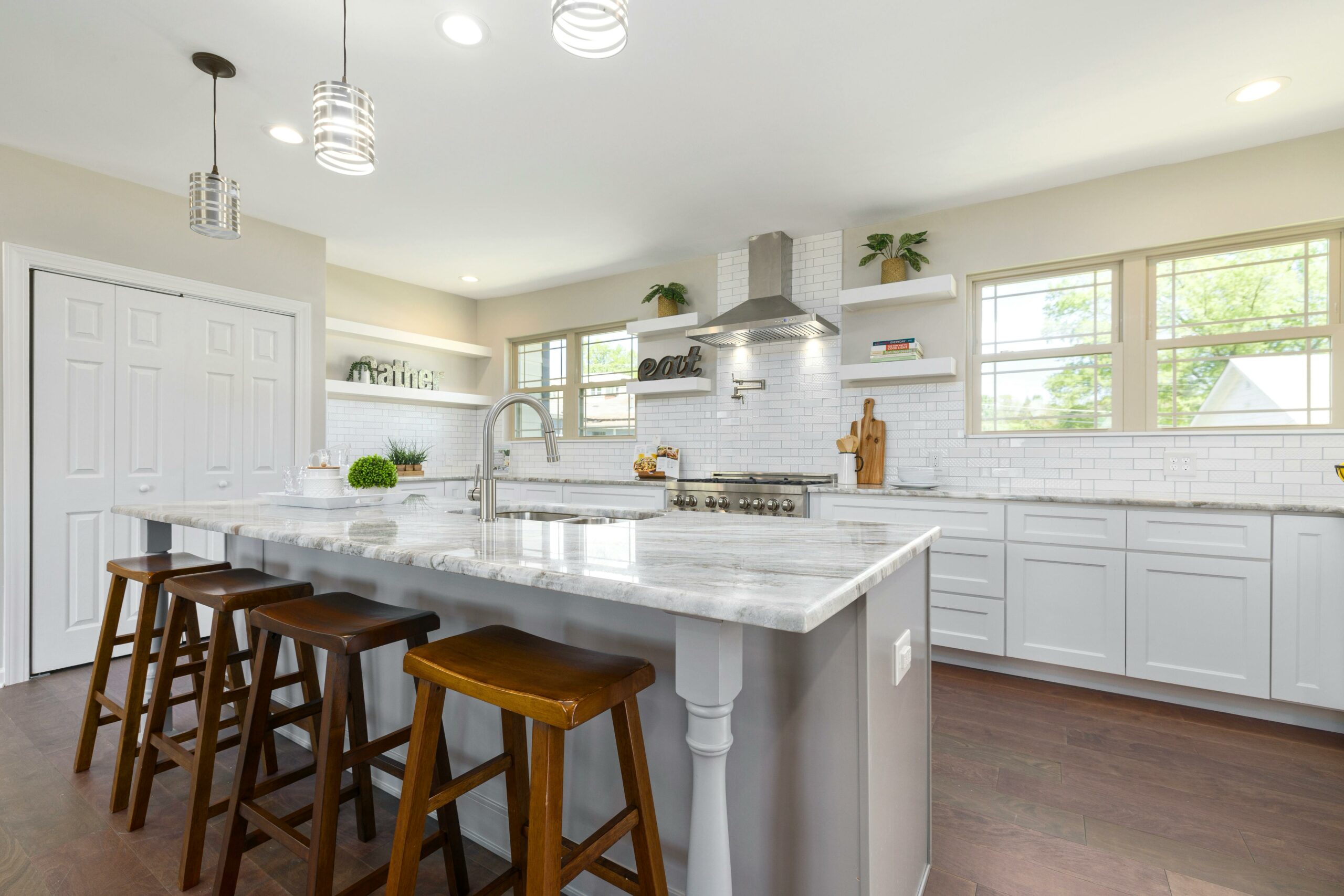
Ways to Style
Styling your kitchen cabinet with countertop can greatly enhance the overall look and feel of your kitchen. Here are some ways to style your kitchen cabinet with countertop:
1. Color Coordination
Choose a countertop color that complements the color of your kitchen cabinet. This will create a cohesive and visually appealing look. For example, if you have white kitchen cabinets, consider pairing them with a dark granite countertop for a striking contrast.
2. Add Decorative Hardware
Upgrade the hardware on your kitchen cabinet to add a touch of style. Consider options like sleek handles or knobs in a metallic finish to give your cabinets a modern and sophisticated look.
3. Display Decorative Items
Utilize the space on top of your kitchen cabinet to display decorative items. This can include items like vases, plants, or decorative plates. Be sure to choose items that complement the overall style of your kitchen.
4. Install Under Cabinet Lighting
Installing under cabinet lighting can not only provide functional lighting for your countertop but also add a stylish element to your kitchen. Choose LED lights in warm or cool tones to create a welcoming ambiance.
5. Incorporate Open Shelving
If you have some empty wall space above your kitchen cabinet, consider installing open shelving. This can be a great way to display your favorite dishes, cookbooks, or decorative items while adding a unique and personalized touch to your kitchen.
6. Use Decorative Backsplash
Consider adding a decorative backsplash behind your kitchen cabinet to elevate its style. Choose a backsplash material that complements your countertop and adds visual interest to the space. Options like subway tiles, mosaic tiles, or patterned tiles can all make a statement.
7. Incorporate Glass Doors
If you have glass doors on your kitchen cabinet, consider styling the interior with glassware or decorative items. This can add a touch of elegance and allow you to showcase your favorite pieces.
By implementing these styling tips, you can transform your kitchen cabinet with countertop into a stylish and functional focal point in your kitchen.
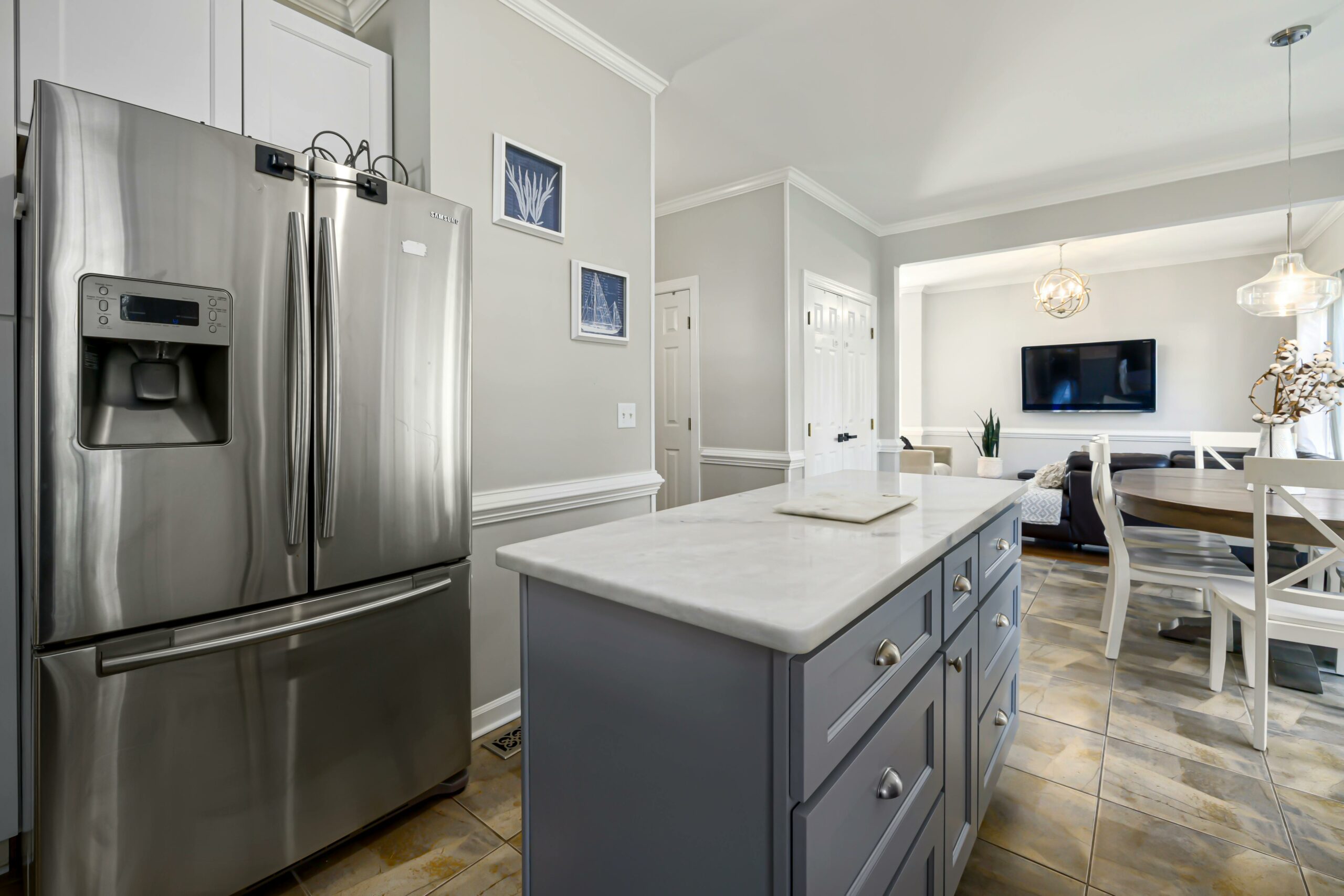
Quality Indicators
When choosing a kitchen cabinet with countertop, it’s important to consider several quality indicators. These indicators will ensure that you invest in a durable and functional cabinet that will enhance the overall look and functionality of your kitchen.
1. Material
The material used in the construction is a crucial quality indicator. Opt for high-quality materials such as solid wood, plywood, or medium-density fiberboard (MDF) for the cabinet. For the countertop, materials like granite, quartz, or solid surface are excellent choices.
2. Construction
The construction of the cabinet should be sturdy and well-built. Look for features like dovetail joints, reinforced corners, and solid hardware. A well-constructed cabinet will ensure durability and longevity.
3. Finishes
The finishes applied to the cabinet and countertop are important quality indicators. Choose finishes that are resistant to moisture, heat, and stains. Additionally, opt for finishes that are easy to clean and maintain.
4. Hardware
The hardware used in the cabinet, such as hinges and drawer slides, should be of high quality. Look for hardware that is durable, smooth, and functional. Good hardware will ensure ease of use and longevity.
5. Installation
The installation is another quality indicator. Make sure it is installed properly and securely. Improper installation can lead to issues like sagging, misalignment, and instability.
6. Warranty
A good quality should come with a warranty. Check the warranty details to ensure that you are covered for any manufacturing defects or issues that may arise.
By considering these quality indicators, you can ensure that your kitchen cabinet with countertop is of high quality and will provide you with years of functionality and aesthetic appeal.
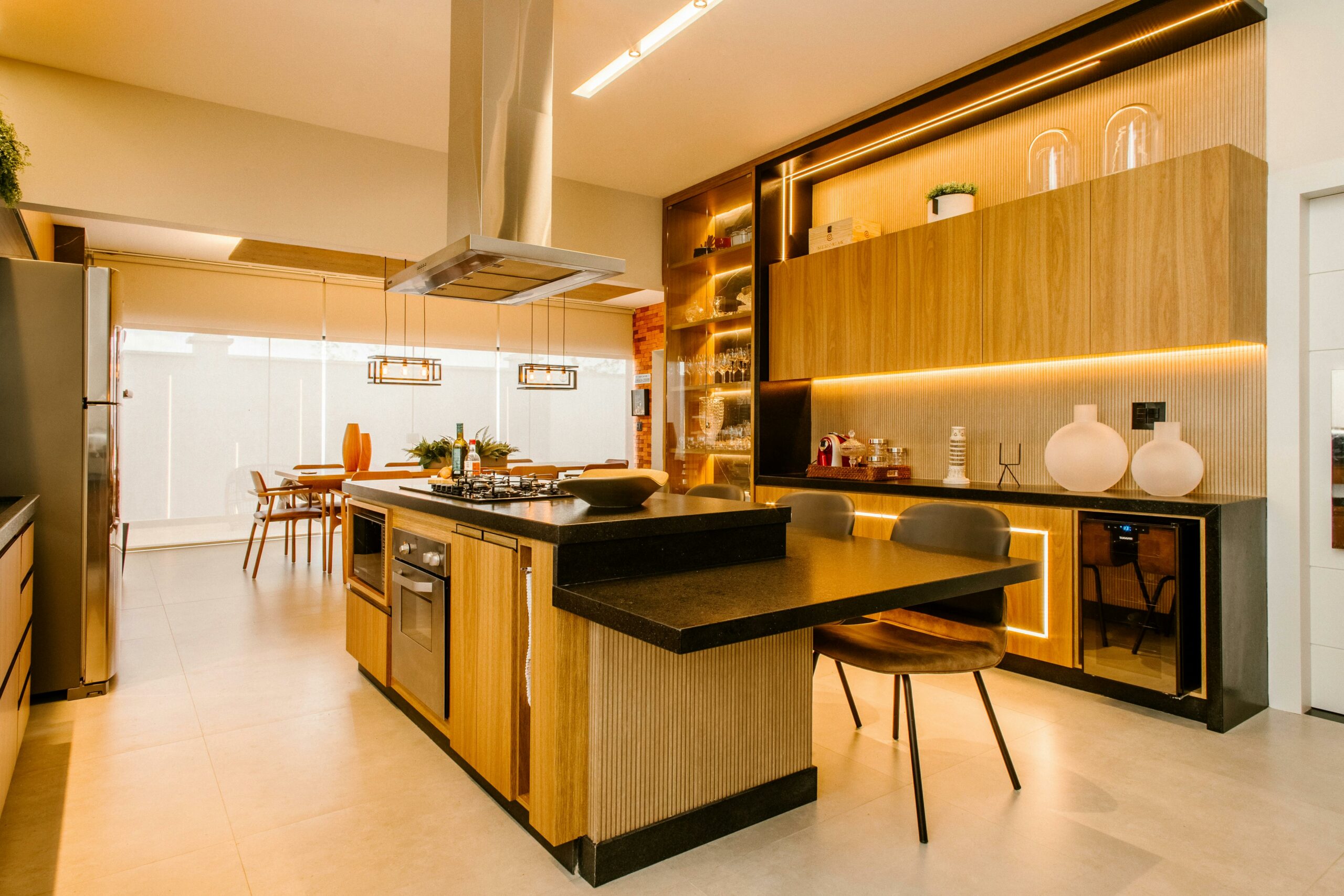
Factors to Consider when Buying
When purchasing a kitchen cabinet with countertop, there are several important factors to consider. These factors will help ensure that you choose the right cabinet that suits your needs and preferences. Here are some key considerations:
1. Size and Layout
The size and layout of your kitchen will greatly influence the type of cabinet with countertop that you should buy. Measure the available space in your kitchen and consider the layout to determine the appropriate size and configuration of the cabinet.
2. Material and Durability
Consider the material used for the cabinet and countertop. Different materials offer varying levels of durability and aesthetics. Common options include wood, laminate, stainless steel, and quartz. Choose a material that fits your budget and matches the overall style of your kitchen.
3. Storage Capacity
Assess your storage needs and determine the amount of storage space required in the cabinet. Consider the number of shelves, drawers, and compartments available to accommodate your kitchen essentials.
4. Style and Design
The style and design of the cabinet should complement the overall theme of your kitchen. Consider the color, finish, and hardware options available. Choose a design that enhances the visual appeal of your kitchen.
5. Budget
Set a budget for your kitchen cabinet with countertop purchase. Determine how much you are willing to spend and look for options that fit within your budget. Consider the long-term value and quality of the cabinet to make an informed decision.
6. Installation and Maintenance
Consider the ease of installation and maintenance of the cabinet. Look for cabinets that come with clear instructions and require minimal upkeep. Consider the cleaning and maintenance requirements of the countertop material as well.
By considering these factors, you can make an informed decision when buying a kitchen cabinet with countertop. Take your time to research and explore different options to find the perfect cabinet that meets your needs and enhances the functionality and aesthetics of your kitchen.

The Cost of Kitchen Cabinet with Countertop Installations
When it comes to installing a new kitchen cabinet with countertop, the cost can vary depending on several factors. It’s important to consider these factors before making a decision to ensure that you stay within your budget.
1. Size and Layout
The size and layout of your kitchen will play a significant role in determining the cost of your cabinet and countertop installation. Larger kitchens will require more materials, which can increase the overall cost. Additionally, complex layouts or custom designs may also add to the price.
2. Material Selection
The type of materials you choose for your kitchen cabinet and countertop will greatly impact the cost. High-end materials such as solid wood or quartz can be more expensive compared to laminate or tile options. It’s important to weigh the cost against the durability and aesthetic appeal of the materials.
3. Labor and Installation
The cost of labor and installation should also be factored into your budget. Hiring a professional contractor or installer will ensure that the job is done correctly, but it can add to the overall cost. Be sure to get multiple quotes and compare prices to find the best option for your budget.
4. Additional Features
If you’re looking to add additional features to your kitchen cabinet and countertop, such as built-in lighting or specialized storage options, these can increase the cost. Consider your needs and budget when deciding on these extras.
5. Location
The cost of kitchen cabinet and countertop installations can also vary depending on your location. Prices may be higher in urban areas or regions with a higher cost of living. It’s important to research local prices and factor this into your budget.
By considering these factors and doing thorough research, you can get a better idea of the cost of kitchen cabinet and countertop installations. Remember to set a budget and stick to it to ensure that you don’t overspend. With careful planning, you can create a beautiful and functional kitchen without breaking the bank.
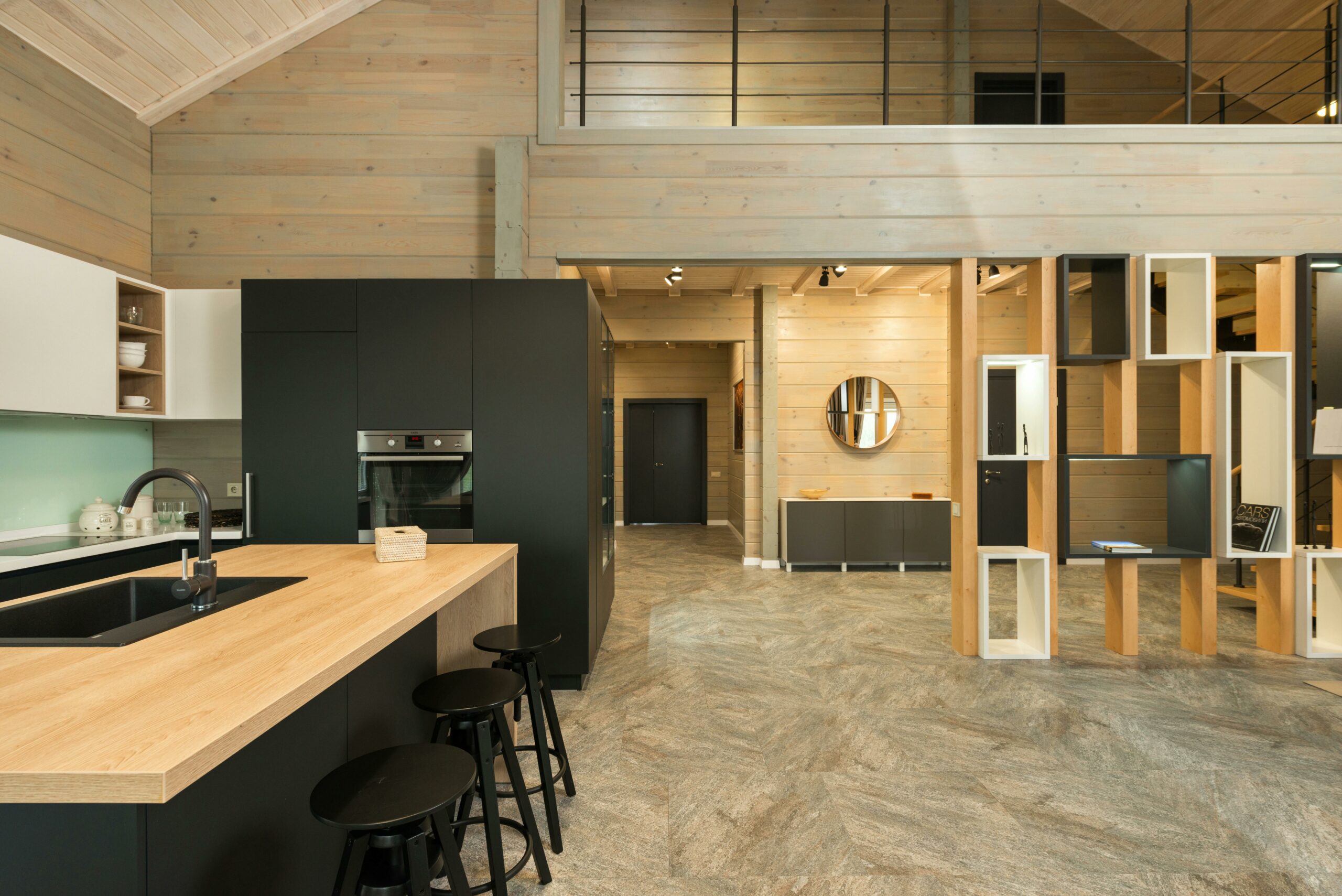
Comparing Materials
When it comes to choosing the right materials for your kitchen cabinet with countertop, there are several options to consider. Each material has its own unique characteristics and benefits. Here, we will compare some of the most popular materials used in kitchen cabinets and countertops:
1. Solid Wood
One of the most traditional and timeless options for kitchen cabinets and countertops is solid wood. It offers a natural and warm look to your kitchen, and it can be easily customized to fit your style and preferences. Solid wood is durable and long-lasting, but it requires regular maintenance to prevent damage from moisture and heat.
2. Laminate
Laminate is a popular choice for kitchen cabinets and countertops due to its affordability and versatility. It is made of layers of paper or fabric impregnated with resin and bonded together with heat and pressure. Laminate is resistant to stains, scratches, and heat, making it a practical option for busy kitchens. However, it may not have the same visual appeal as natural materials.
3. Stainless Steel
Stainless steel is a sleek and modern choice for kitchen cabinets and countertops. It is known for its durability, resistance to stains and heat, and easy maintenance. Stainless steel can give your kitchen a professional and industrial look, but it may show fingerprints and scratches more easily than other materials.
4. Quartz
Quartz is a man-made material made from crushed quartz crystals mixed with resin. It is known for its durability, non-porous surface, and wide range of colors and patterns. Quartz is resistant to stains, scratches, and heat, making it a popular choice for kitchen cabinets and countertops. However, it can be more expensive than other materials.
5. Granite
Granite is a natural stone that offers a luxurious and elegant look to your kitchen. It is known for its durability, heat resistance, and unique patterns. Granite requires regular sealing to prevent stains and can be more expensive than other materials. However, it adds value to your home and can last for a lifetime with proper care.
When comparing materials for your kitchen cabinet with countertop, it’s important to consider factors such as durability, maintenance, cost, and visual appeal. Each material has its own pros and cons, so make sure to choose the one that best suits your needs and preferences.

The Role of a Kitchen Cabinet with Countertop in Kitchen Design
A kitchen cabinet with countertop plays a crucial role in the overall design and functionality of a kitchen. It serves as both a storage solution and a work surface, making it an essential element in any kitchen space.
One of the primary roles of a kitchen cabinet is to provide ample storage space for kitchen essentials. With various compartments and shelves, it allows homeowners to organize and store their cookware, utensils, and ingredients efficiently. This helps to keep the kitchen clutter-free and promotes a clean and organized cooking environment.
In addition to storage, also serves as a work surface. The countertop provides a sturdy and durable space for meal preparation, cooking, and other kitchen tasks. It offers a convenient area for chopping, mixing, and assembling ingredients, making cooking more efficient and enjoyable.
Furthermore, a kitchen cabinet contributes to the overall aesthetic appeal of the kitchen. It is available in a wide range of styles, materials, and finishes, allowing homeowners to choose a design that complements their kitchen decor. Whether it’s a sleek and modern look or a rustic and traditional feel, the cabinet and countertop combination can enhance the visual appeal of the kitchen space.
Moreover, the choice of material for the countertop can also impact the functionality of the kitchen cabinet. Different materials, such as granite, quartz, or laminate, offer varying levels of durability, heat resistance, and maintenance requirements. Homeowners can select a material that suits their cooking habits and lifestyle, ensuring that the kitchen cabinet with countertop meets their specific needs.
In conclusion, a kitchen cabinet with countertop plays a vital role in kitchen design. It provides storage space, serves as a functional work surface, enhances the aesthetic appeal of the kitchen, and offers customization options to meet individual preferences. Choosing the right kitchen cabinet with countertop is essential to create a functional and visually appealing kitchen space.
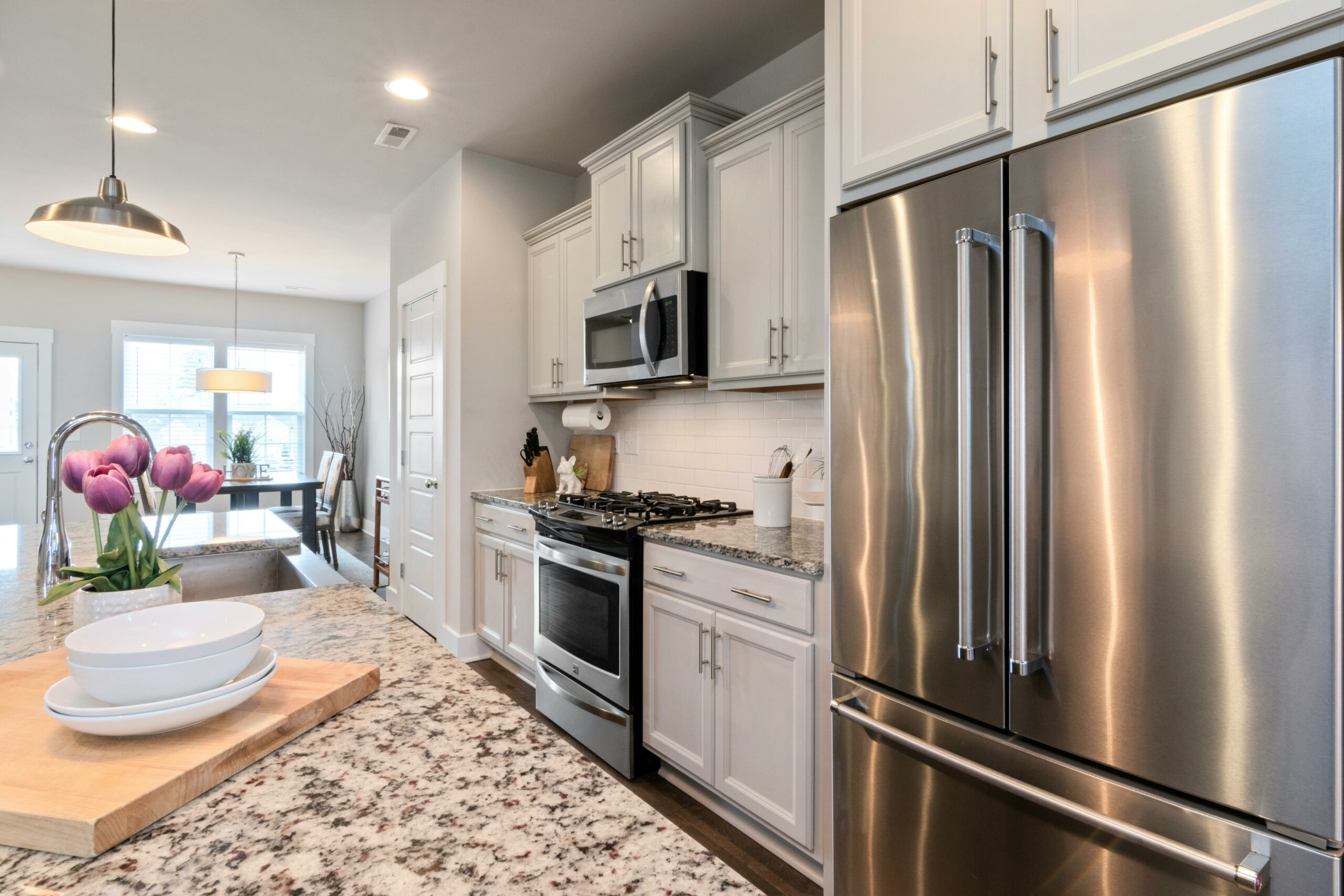
Future Trends Designs
In recent years, kitchen cabinet and countertop designs have evolved significantly to meet the changing needs and preferences of homeowners. As we look ahead, several trends are expected to shape the future of kitchen cabinet and countertop designs.
1. Minimalist and Sleek Designs
One of the emerging trends in kitchen cabinet and countertop designs is a shift towards minimalist and sleek aesthetics. Homeowners are increasingly opting for clean lines, minimalistic hardware, and seamless designs that create a sense of openness and simplicity in the kitchen.
2. Sustainable and Eco-Friendly Materials
With a growing emphasis on sustainability, eco-friendly materials are gaining popularity in kitchen cabinet and countertop designs. Materials such as bamboo, reclaimed wood, and recycled glass are being used to create stylish and environmentally conscious kitchen spaces.
3. Smart and Technology-Integrated Features
The integration of technology in kitchen cabinet and countertop designs is another trend on the rise. Smart features such as touchless faucets, built-in charging stations, and voice-controlled appliances are becoming more common, making kitchen tasks more convenient and efficient.
4. Mixed Materials and Finishes
Gone are the days of matching cabinets and countertops. Mixing different materials and finishes is becoming increasingly popular, adding visual interest and depth to kitchen designs. Combining materials like wood, metal, and stone can create a unique and personalized look.
5. Bold Colors and Patterns
While neutral tones have long dominated kitchen designs, bold colors and patterns are making a comeback. Vibrant cabinet colors, geometric patterns on countertops, and statement backsplashes are being used to add personality and create focal points in the kitchen.
6. Open Shelving and Display Cabinets
Open shelving and display cabinets are gaining popularity as homeowners look for ways to showcase their kitchenware and add a touch of openness to their kitchen spaces. These features not only provide easy access to frequently used items but also allow for creative styling opportunities.
7. Customization and Personalization
As homeowners seek to create unique and personalized kitchen spaces, customization options are becoming more important in kitchen cabinet and countertop designs. From custom storage solutions to personalized finishes, the ability to tailor kitchen elements to individual preferences is highly valued.
As the kitchen continues to be the heart of the home, these future trends in kitchen cabinet and countertop designs will shape the way we design and experience our kitchens. Whether it’s embracing minimalist aesthetics, incorporating sustainable materials, or integrating smart features, the future of kitchen design is exciting and full of possibilities.

